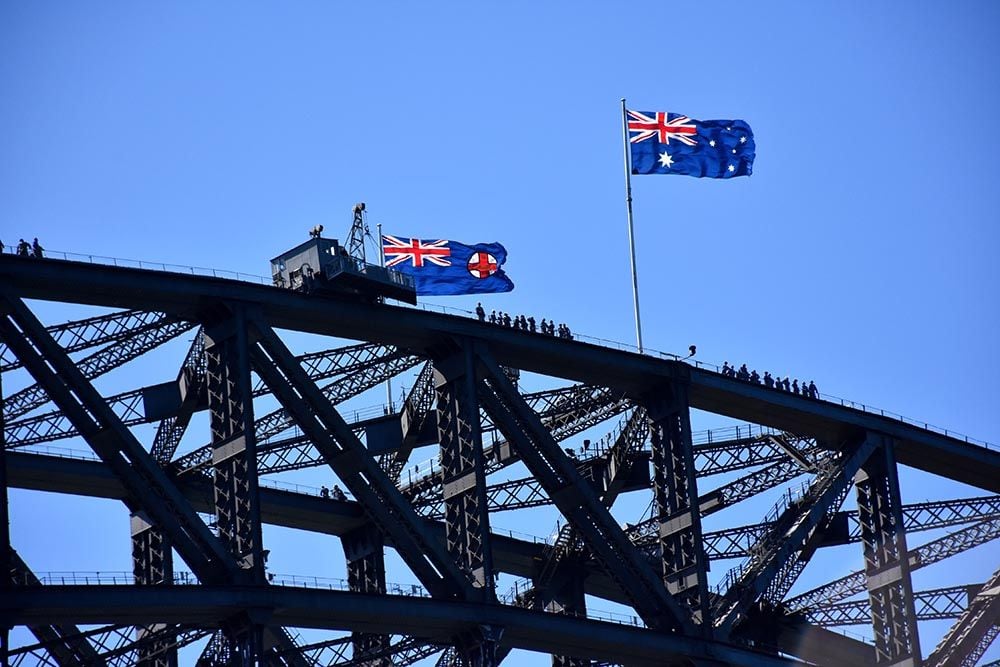Australian Dollar: NAB Forecast two RBA Rate Cuts in 2019, if they are Right Expect Currency Weakness
- Written by: James Skinner
-

Image © Desiree Caplas, Adobe Stock
- NAB projects 1% cash rate in 2019.
- But Aussie Dollar too righ as markets are behind the curve.
- GBP/AUD has further to rise if predictions correct.
The Australian Dollar could be facing further losses during the weeks and months ahead if new interest rate forecasts made by National Australia Bank (NAB) prove to be correct.
NAB - one of Australia's largest lenders - said Friday that it now expects the Reserve Bank of Australia (RBA) to cut its interest rate twice this year, with a 25 basis point reduction of the cash rate to 1.25% coming in July and a final cut to 1% being delivered in November.
"We now think that the RBA will make two rate cuts in 2019. Growth appears to have lost significant momentum, placing at risk further improvement in the labour market at a time when inflation poses little constraint on policy and financial stability risks have abated," says Alan Oster, chief economist at NAB.
Financial markets are already pricing in RBA interest rate cuts for the coming years, which has seen the Aussie Dollar hammered hard during recent months as the market was previously hoping to see the central bank raising rates in the first quarter of 2020.
However, current market pricing does not yet reflect the full amount of rate cuts that NAB and others are increasingly saying will be delivered. The implied cash rate for July 02 this year, in the overnight-index-swap market was 1.33% on Friday morning.
However, if the RBA cuts its interest rate in July, or before then, the cash rate would be just 1.25%. Furthermore, the implied rate for December 03, 2019 is 1.15% and the rate for November 05 is 1.17%. But NAB's forecast is for the cash rate to be at 1% by those dates.
"We see the timing of a rate cut as very data dependent; any deterioration in the labour market would lead to cuts and this could happen earlier than the financial market currently anticipates," Oster warns.

Above: Pound-to-Australian-Dollar rate shown at daily intervals.
The RBA changed its interest rate stance last month and now suggests the next move in borrowing costs could be either up or down. For quite some time before then it had been telling markets the next move would be up, and most economists were happy to forecast rate hikes for 2020.
Persistent below-target inflation and a clear loss of economic momentum were the main factors behind the decision. But the RBA is still to some extent holding out for an opportunity to raise rates, claiming low unemployment and jobs growth could lift wage growth and boost inflation during the quarters ahead.
This means the labour market is, for the Australian Dollar, the last line of defence against interest rate cuts. Few analysts or economists expect any further reduction in the unemployment rate in the current environment, while some are forecasting an increase to 5.3%. The current rate is just 5%.
"While we have only made modest downward revisions to our previous growth forecasts of 2.4% this year and 2.2% next year, we now expect little if any improvement in the near term in the unemployment rate, with an eventual increase later in the forecast horizon," says Oster.
Australia's economy grew by just 0.2% during the final quarter last year, down from an already-paltry 0.3% back in the previous period, which means GDP rose by only 2.3% for 2018 as a whole.
That's down from the 2.8% annual pace of growth seen at the end of the third quarter and beneath the RBA's February 2019 forecast for a steady 2.8%, with much of the deceleration having its roots in the household sector.
"The Q4 national accounts confirmed that the downturn in the residential construction sector is likely to be as sharp as we had previously forecast and similar in magnitude to the early 1990s recession. It also confirmed that consumption growth has remained weak, alongside only modest growth in household income," Oster says.

Above: AUD/USD rate shown at daily intervals.
Economists are connecting Australia's slowing economy with an ongoing downturn in house prices, which now appears to be having an impact on household confidence and consumers' willingness to spend.
Policymakers and markets have long been concerned about the impact that house price falls could have on consumer spending and economic growth, with RBA Governor Philip Lowe the latest to opine on the topic.
Lowe said in a speech on Tuesday that, after declining 9% in the last year, Australian home prices could still have further to fall. This could see household spending decline and savings begin to rise, although Lowe says the impact should be felt mainly by car dealers and furniture sellers.
Regardless of what Lowe says, NAB's Oster and other forecasters are increasingly confident the RBA will be forced to cut rates this year on as many as two occasions. And pricing in the financial markets does not yet fully reflect this, which means there could still be some level of downside to play out in Australian Dollar exchange rates.
The AUD/USD rate was quoted 0.07% higher at 0.7028 Friday but is down -0.33% for 2019, after having declined by around 9% in 2018. The Pound-to-Australian-Dollar rate was -0.16% lower at 1.8606 but has risen 2.8% for 2019, after gaining close to 5% last year.
Time to move your money? Get 3-5% more currency than your bank would offer by using the services of foreign exchange specialists at RationalFX. A specialist broker can deliver you an exchange rate closer to the real market rate, thereby saving you substantial quantities of currency. Find out more here.
* Advertisement





